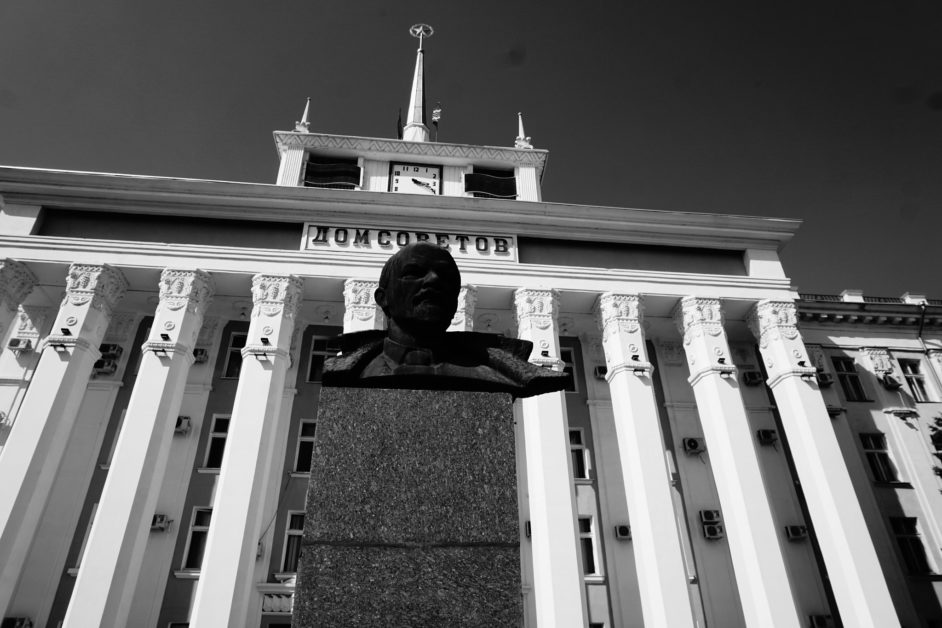Moldova as part of the USSR with the beginnings of its collapse began its complicated process of creating a country which in turn produced the conflict in Transnistria, which today still belongs to the existing frozen conflicts in the Eastern Partnership.
Moldova has acquired its state status as a socialist republic in the USSR after World War II, which historically previously belonged to Romania, known as Bessarabia. With the occupation and incorporation of this region in the USSR, a socialist republic of Moldova was formed, to which was added the Transnistria region which was a former autonomous part of Ukraine with mainly Russian and Ukrainian population, and with the decline of Soviet power the hidden conflictual nature came to the fore.
The reasons and the timeline of the conflict in Transnistria
The reasons for the conflict begin in 1989 with the adoption of the law for Moldovan-Latin alphabet to become an official language and obligatory for positions where official communication is needed, which the Russian and Ukrainian population viewed as a discriminatory policy.
Furthermore, the policy of the leading “Popular Front” for reunification with Romania after the fall of the regime of Ceausescu further cemented the fears of this small region that did not see its future in that direction.
Following these events, Transnistria declared secession from Moldova in September 1990, and the next year when Moldova declared independence from USSR, Transnistria also declared independence.
The presence of the 14th Russian Army and the high militarization in the region that existed during USSR helped the paramilitary forces in Transnistria to occupy public institutions in the region, with the authorities retaliating for the first time on December 13th, 1991.
On March 28th, a state of emergency was declared. Military operations culminated in June, with a ceasefire agreement between Russia and Moldova being reached on July 21st in the following month.
EU’s capabilities of conflict resolution in Transnistria
In an analysis of the European capabilities and contribution towards a conflict resolution, it seems that in this case, the EU possesses the most significant capacity of hard power which combined with proper public diplomacy and soft power can bring success in Moldova.
The state has long regarded the EU as a strategic partner, and there is a desire for joining the Union, which if not addressed, can seriously erode and reduce sympathy for the EU. In 2014, Moldova signed an Association Agreement and DCFTA, and also enjoys a free visa regime in the Schengen area. Also, the EU is the leading trading partner and donor of economic assistance to Moldova.
To ensure the Ukrainian-Moldovan border, from 2005 the EUBAM mission is functioning to prevent the trafficking of illicit goods from the Transnistria region and to force exporters to register with Moldovan authorities. In addition, the conflict is not burdened with enormous ethnic hatred and expressed animosities like the other frozen conflicts in the EaP.
The EU wants pro-European and secure Moldova on its borders and reintegration of Transnistria, while Russia due to the great separation of the region with Ukraine’s border is not interested in a solution for secession, but rather a reintegration that would block the European process of Moldova. These conditions are an advantage for the EU, which could achieve genuine success in resolving frozen conflicts.
This kind of constellation is formed despite Russia’s strong influence and capacity of hard power, and the main reason for this is that the EU also possess strong capabilities in Moldova. Enclosed with pro-European Ukraine combined with a more prominent trade exchange between Transnistria and EU, this could represent a good starting point that would intensify the negotiations for a solution.
According to various public opinion polls, for the Moldovan public, the issue with Transnistria represents even ninth or tenth priority for the population, which in some way facilitates the negotiation pressure for Moldova. But this also leads to disinterest for significant reintegration and a power-sharing model which would only make the situation more difficult according to some and would be an additional burden for Moldova.
The EU’s technocratic pragmatism towards Transnistria for maneuvering the DCFTA problem and the new two-year transitional period towards the authorities that will have to meet the key points of the trade agreement is good example policies. By strengthening co-operation and improving the economy in the region with additional reform support to Moldova, the parties can come closer to the negotiating table.
Russian influence in Transnistria
Russia’s policy towards Moldova’s entire process of Europeanization is to undermine it with the threat of secession from Transnistria and additionally from Gagauzia. This strategy is clearly expressed in the statement of Deputy Prime Minister of Russia and negotiator in 5 + 2 format Dmitry Rogozin that the train to Europe ” might lose a few cars on the way”.
Transnistria enjoys long-standing economic assistance from Russia, which finances the pension system and provides energy whose debt accumulates with which ” pragmatically” threatens that if independence is not guaranteed for Transnistria, it is legally a Moldovan debt.
In addition, Russia has issued a considerable number of Russian passports in the region, which clearly follows the pattern from the other frozen conflicts. Also, the Russian peacekeeping forces, which are successors from the 14th Army numbers about 1,000 troops through which Russia threatens that can be a military base through a series of concentrated media leaks.
These are huge potentials of hard power that still put Russia in a pole position but from those mentioned above, not the only actor which can limit the space for a maneuver. It should be emphasized that trade between Russia and Transnistria is dropping drastically, just like remittances, which is not a trend that goes in their favor.
The real challenge for Moldova
While these realities point to the difficulty of finding a solution, perhaps Moldova’s current biggest problem is endemic corruption, weak public institutions, compromised judiciary and limited media freedom undermining the process of Europeanization and increasing the popularity of Putin’s Customs Union.
Corruption and political benefits for the authorities are associated with the EU, which must be distinguished through enhanced public diplomacy and highlighting European projects and benefits for the country. This is necessary because only a stable Moldova followed by full EU support with robust capabilities that are at its disposal can absorb and attract Transnistria and contribute to a possible peace solution.
The full text of this article was first written in 2017 in Master Thesis: “The role of the EU in resolving frozen conflicts in the “Eastern Partnership” through the prism of realism”, University “St. Cyril and Methodius”, Law School Iustinianus Primus- Skopje

